Mirror Removal and Initial
Inspection
Here are some pictures from our
"mirror removal party", on the evening
of September 23, 2004.
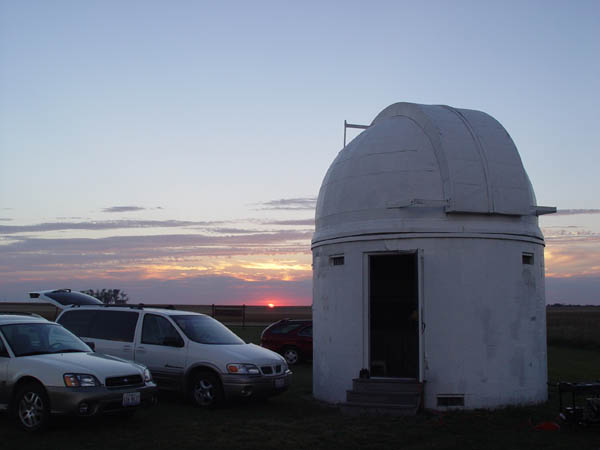
A nice sunset, as we get ready to disassemble the scope. Those
present were Guy Hampel (who brought lights and extension cords), Phil
Wall, and myself.
We fired up
the generator for lighting and took quite a few measurements of the
scope and the mirror positions. Next, I did a quick star test of
the optics, and Guy tried to snap some photos of the patterns through
the eyepiece with his digital cameral. With the documentation
finished, we proceeded to remove the primary
mirror and cell.
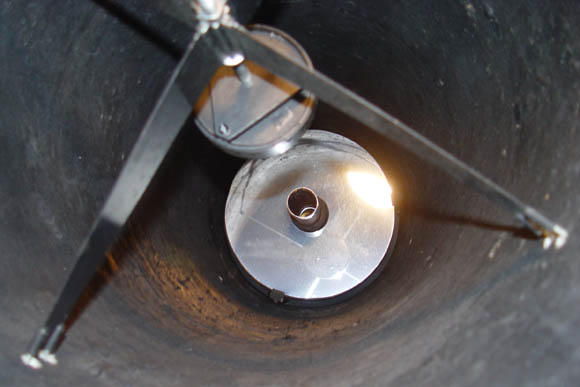
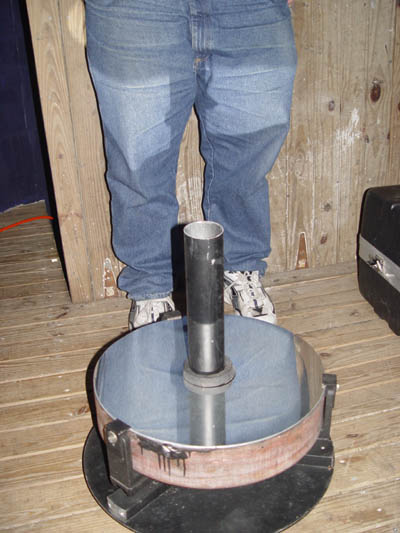
A view down the tube, looking at the primary mirror and baffle.
The secondary mirror is above, a bit out of focus. The secondary
mirror was not centered in the tube and could rattle around in its
holder, and neither mirror appeared to be
in proper collimation based on a visual inspection of the secondary
tilt and the star test. The second picture is the mirror and
cell, after removal from the tube assembly. Phil Wall is standing
behind it. The mirror is 3.5" thick, about 16 3/8" in
diameter, and weighs about 50 lbs. It's one beast of a mirror.
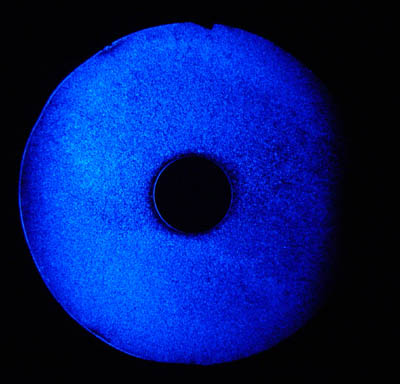
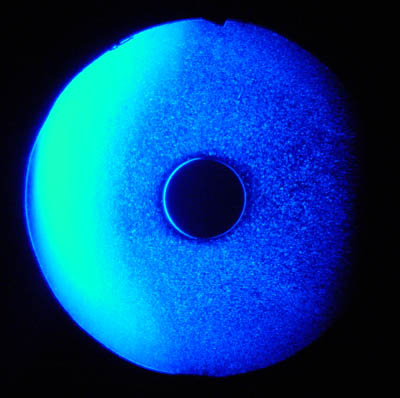
I took the mirror and cell home, and washed off as much of the dirt as
I could. I placed the mirror on my large test stand to take a
look at the figure, but the shadows weren't right - there was a huge
amount of scatterred light. Immediately I knew the coating, 6
years after Clausing did it, was finished. Above are two views of
the mirror under the focault test.
Illumination
source is a blue LED. For the image at left, the light spots are
reflective portions of the coating that are scattering light out past
the knife edge. Dark portions are either failed coating areas or
areas that are not scattering light. The image at right has the
knife edge removed from the beam more, so that the left edge of the
mirror is more intensely illuminated. This mirror has obviously
experienced
a severe coating failure.
In the interest of documentation, I wanted to illustrate just how bad
it was. So, I came up with a quick way to illustrate the
failure. Here are some pictures of the coating inspection, using
a lamp to
illuminate the mirror from behind The whole-mirror view shows my
reflection. The closeup shows the true extent of the coating
loss.
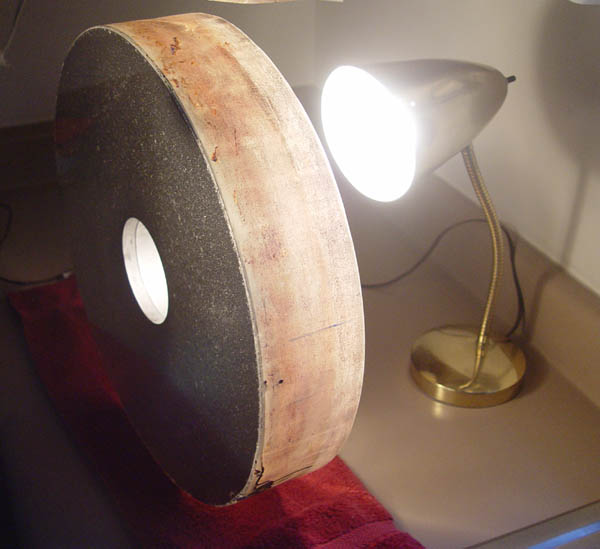

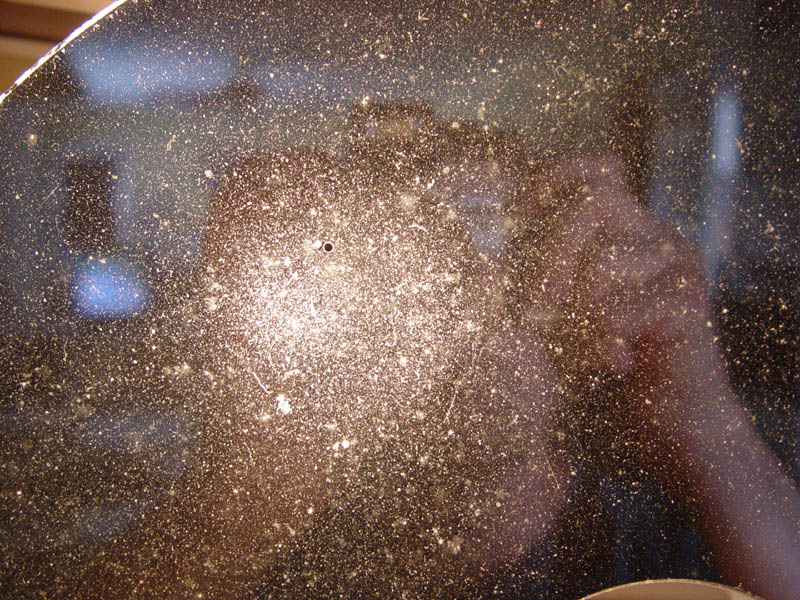
Some have told me that Clausing coatings (at least the Beral variety)
fail when exposed to salt air, and when exposed to temperatures above
100 degrees F. Moisture could also be a culprit. In any
event, I am quite sure the coating has been in bad shape for some time
now, likely at least a year or longer. So, I'll rate the 5-year
lifespan of this coating as poor, and the coating itself as
unacceptable. I will recomment overcoated aluminum for the next
coating, from L&L Optical Services in CA, Spectrum Coatings in FL,
etc.







